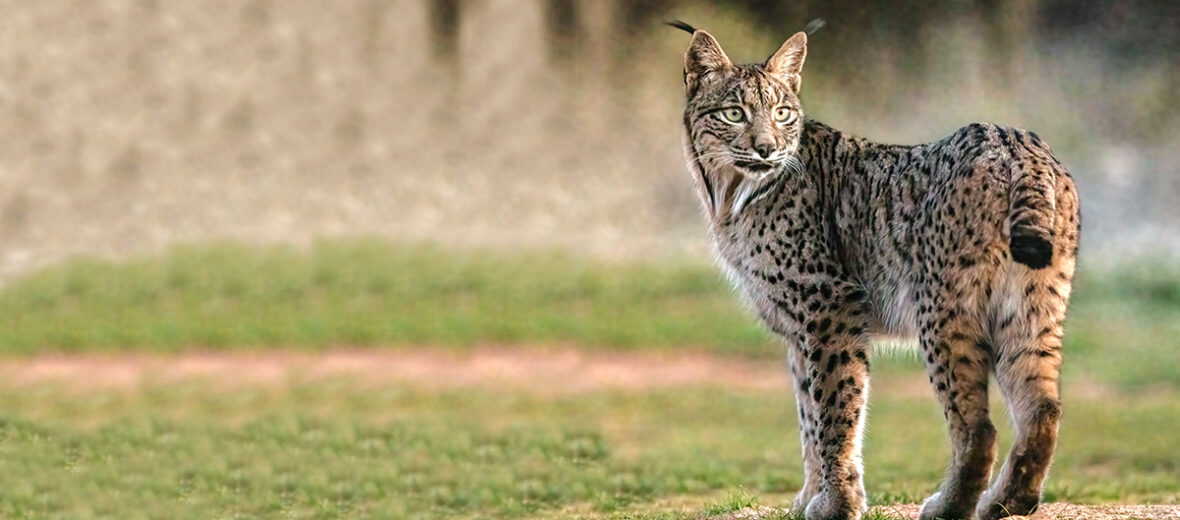
The Iberian lynx, aka pardel Lynx or Spanish lynx, is considered to be the rarest of all the lynx species. While once widespread, these lynx are now reduced to a couple locales: Doñana and Andujár-Cardeña National Park in the Spanish autonomic region of Andalusia. They face the threats of habitat loss and destruction at the hands of residential and commercial developments, agriculture, and logging; hunting; trapping; invasive species (and with them disease and competition for food); and climate change (causing flooding and droughts). These cats are listed as Endangered by the IUCN.
First the Stats…
Scientific name: Lynx pardinus
Weight: Up to 35 lbs.
Length: Up to 32.3 inches, plus up to a 6.3 inch tail
Height: Up to 2.3 feet
Lifespan: Up to 13 years
Now on to the Facts!
1.) Even though their numbers are increasing, thanks to conservation efforts, there were only an estimated 156 wild individuals as of 2014.
2.) Iberian lynx are nocturnal (active at night). However, in the winter, they become diurnal (active during the day), in order to hunt their prized prey… the European rabbit.
3.) These cats, like most other cats, are solitary and only come together to mate.
4.) A group of cats is called a clowder, clutter, destruction, or pounce.
5.) Their primary prey are rabbits. But they’ll also prey on mice, rats, birds, and they will even go after mouflon and deer, if rabbits are a scarce commodity.
But wait, there’s more on the Iberian lynx!
6.) Like other cats, these lynx are polygynous (1 male mates with several females). However, there are some areas where each cat’s territory is limited, so they turn to monogamy (mate with 1 partner each season).
7.) Females undergo up to a 60 day gestation (pregnancy) that yields up to 3 kittens.
Did you know…?
These speedy lynx can reach speeds of up to 49.71 mph!
8.) Kittens are born altricial (blind and helpless).
9.) In up to 10 months the kittens are weaned and independent.
10.) Females typically wait till their territory is fully established before deciding to mate. Sometimes this establishment never happens.
But wait, there’s still more on the Iberian lynx!
11.) The Iberian lynx, like other cats, has vertical pupils and incredible vision, primarily in low visibility conditions.
12.) Their whiskers provide highly detailed information relating to their sense of touch.
Did you know…?
Their name hails from the Greek word “phaino,” which means “to shine,” and is in reference to the reflective quality in their eyes. This eye shine is the result of having a tapetum lucidum (the reflective layer in the back of the eye).
13.) Like tigers and some other cats, these lynx will bury uneaten food and come back to eat it later.
14.) Males typically need to eat the equivalent of 1 rabbit a day. Gestating (pregnant) females need up to 3 rabbit sized meals per day!
15.) These cats will puff up when threatened or startled.
Now a Short Iberian Lynx Video!
Be sure to share & comment below! Also, check out the Critter Science YouTube channel. Videos added regularly!
Want to suggest a critter for me to write about? Let me know here.
Some source material acquired from: Wikipedia & IUCN
Photo credit: Diego Delso



